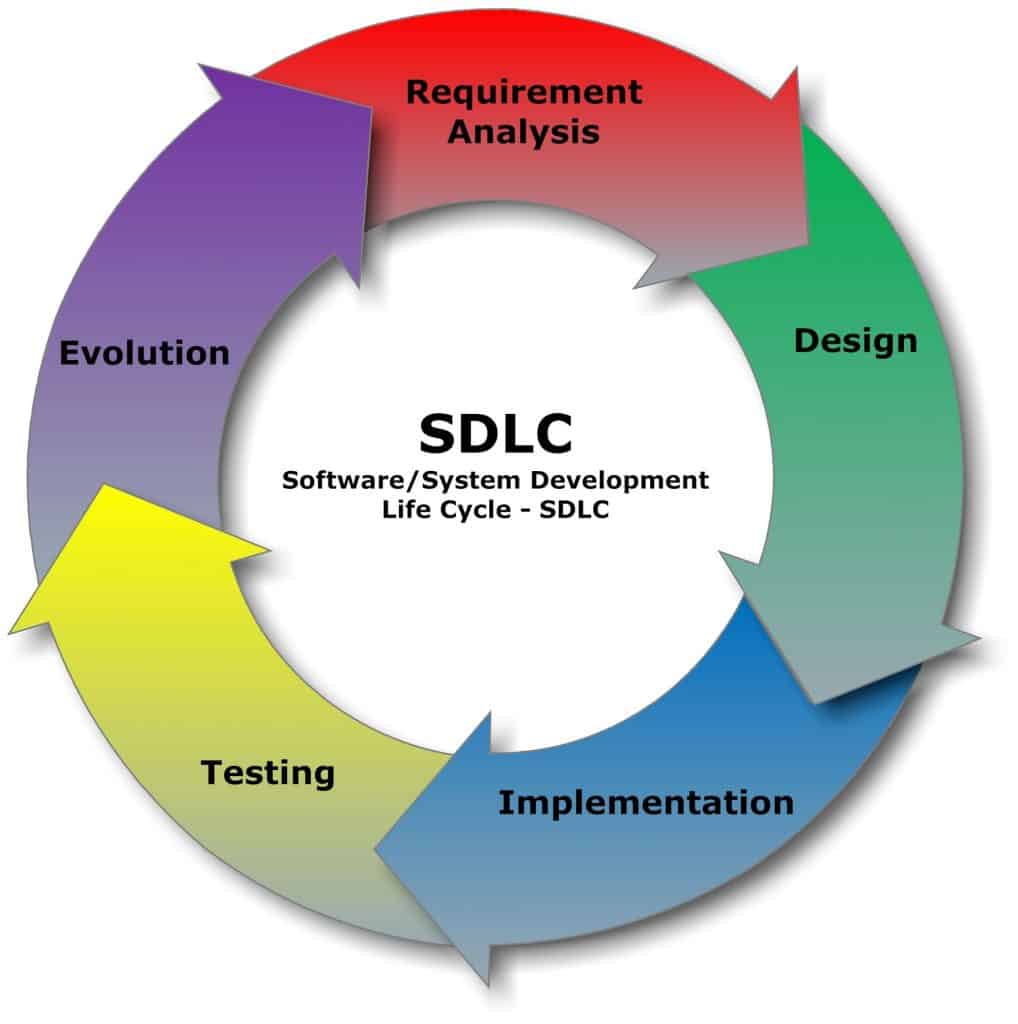
The system development life cycle (“SDLC” for short) allows users to migrate newly developed projects to operational projects. The System Development Life Cycle phases is a systematically structured, multi-step iterative process.
This process is used to model technical and non-technical activities, to provide a framework for providing quality systems that meet or exceed organizational expectations, or to guide decision-making progress. increase.
Traditionally, the system development life cycle consisted of 5 to 7 phases. By increasing the number of steps, systems analysts were able to define clearer actions to achieve specific goals. Similar to the Project Lifecycle (PLC), Software Development Life Cycle uses a systematic approach to describe the process.
Often used and tracked when an IT or IS project is under development. The Software Development Life Cycle highlights various stages (phases or steps) of the development process.
The Software Development Life Cycle approach is used to help users see and understand the activities involved in a particular step. It is also used to let you know that you can repeat a step at any time or modify a previous step if you need to change or improve your system.

This is the first phase of the system development process. Before you start the planning phase, it’s a good idea to take the time to get a good understanding of your app development lifecycle.
The planning phase (also known as the feasibility phase) sounds exactly like that. In other words, it’s the phase where developers plan their next project. Helps define problems and the scope of existing systems and determine goals for new systems.
By creating an effective blueprint for the next development cycle, you can theoretically identify the problem before it affects development. And it helps to secure the funds and resources needed to realize the plan.
Perhaps most importantly, the project timeline is set during the planning phase. This can be important when developing commercial products that need to be put on the market by a specific date. It identifies whether a new system is needed to achieve a company’s strategic goals.
This is a preliminary plan (or feasibility study) of a company’s business initiative to acquire resources to build an infrastructure to change or improve services. Companies may also try to meet or exceed the expectations of their employees, customers, and stakeholders.
The purpose of this step is to find the scope of the problem and determine the solution. In this phase, you need to consider resources, costs, time, benefits, and other factors.
In the second phase, the organization addresses the root cause of the problem or the need for change. If you encounter a problem, present and analyze possible solutions to determine the best solution for your project’s ultimate goals.
Here, the team considers the functional requirements of the project or solution. This is also where system analysis takes place. Or an analysis of the end-user needs to ensure that the new system meets expectations.
Systems analysis is important in determining what a company’s needs are, how they can be met, who is responsible for the individual parts of the project, and what type of time frame is expected in system development life cycle phases.
There are several tools that companies can use especially in the second phase of system development life cycle phases. These include:
Phase 3 details the specifications, features, and operations required to meet the functional requirements of the proposed system development life cycle phases. This is a step for the end-user to discuss and determine the specific business information requirements of the proposed system.
This phase explores the components (hardware and/or software), structure (network capabilities), processes, and procedures that are essential for a system to achieve its goals.
In the fourth phase of the system development life cycle phase, the actual work begins. Especially when programmers, network engineers, and database developers are brought in to do the main work of the project.
Matter of fact, this task uses flowcharts to ensure that the processes in your system are well organized. The development phase marks the end of the first phase of the process. This phase also marks the start of production.
The development stage is also characterized by infusions and changes. Focusing on training can be of great benefit at this stage of system development life cycle phases.
Creating software is not the end. Now we need to test to make sure there are no bugs and no negative impact on the end-user experience.
During the testing phase of system development life cycle phases, developers examine the software with a fine-toothed comb to note bugs and defects that need to be tracked, fixed, and retested later. It is important that the entire software meets the quality standards previously defined in the SRS documentation.
Depending on the skill of the developer, the complexity of the software, and the needs of the end-user, the test can be either a very short phase or a very long phase. In the fifth phase of system development life cycle phases, using system integration and system testing (usually performed by quality assurance (QA) experts), the proposed design sets the initial business goals.
Determine if it meets. You can repeat the test, especially to check for errors, bugs, and interoperability. These tests are run until the end-user determines that they are acceptable. Another part of this phase is validation and validation in system development life cycle phases. Both will help you complete the program successfully.
In the sixth phase of the system development life cycle phase, most of the code in the program is written. In addition, this phase involves the actual installation of the newly developed system.
In this step, you move your project to production by moving data and components from the old system and placing them directly on the new system via a cutover. This can be a risky (and complex) move, but switching is usually off-peak and minimizes risk in system development life cycle phases.
Now both system analysts and end-users should be able to see the realization of the project that implements the changes. After testing, the overall design of the software is put together. Various modules or designs are integrated into the primary source code through developer efforts and typically use a training environment to detect further errors and defects.
The information system will be integrated into the environment and will eventually be installed. After this phase, the software is theoretically ready for market and available to all end-users in system development life cycle phases.
The seventh final phase of the system development life cycle phases includes maintenance and the required regular updates. This step allows the end-user to fine-tune the system as needed to improve performance, add new features, or meet additional user requirements in system development life cycle phases.
System Development Life Cycle does not exist when the software is released. Developers need to enter maintenance mode and perform the activities necessary to resolve issues reported by end-users.
In addition, the developer is responsible for implementing any changes that the software may require after deployment. This may include addressing the remaining bugs that could not be patched prior to release or resolving new issues that surfaced based on user reports.
Larger systems may require longer maintenance periods than smaller systems in system development life cycle phases.
Also read, 7 Software Development Challenges [And How To Overcome Them]
Sign up to stay updated with the latest insights, news, and more.